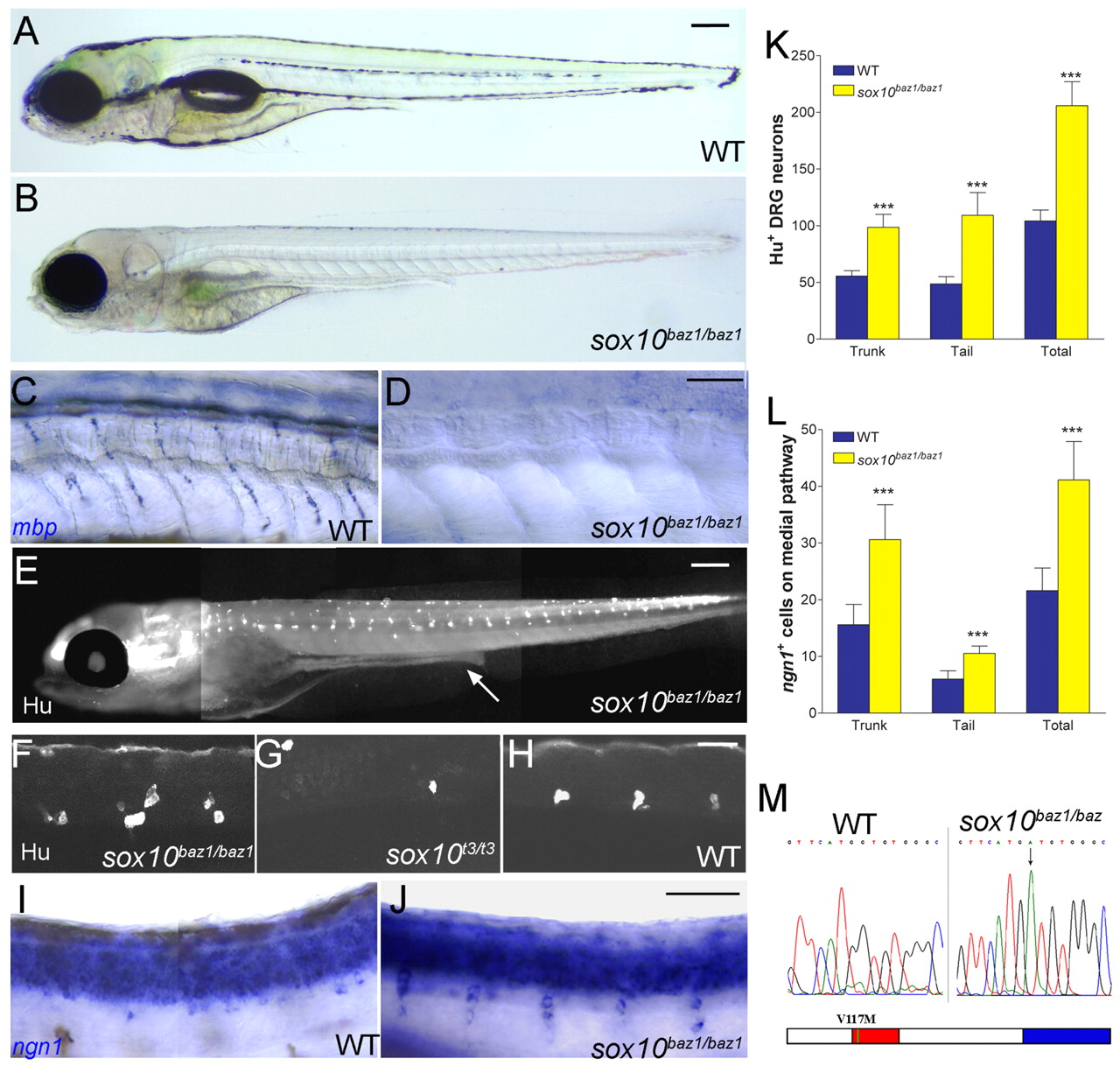Fig. 8 sox10baz1 mutants show a unique, neurogenic DRG phenotype. (A-H) 5 dpf sox10baz1/baz1 showed severe reductions in NC-derived melanophores (B) and mbp+ Schwann cells of spinal nerves (D) compared with wild-type siblings (A,C). Note similar strength of these phenotypes to sox10m618/m618 (see Fig. 2C-D). In contrast, Hu+ DRG sensory neurons were more abundant in sox10baz1/baz1 embryos (E, low power; F, higher confocal magnification view of three segments of tail) than in wild type (H), and thus much more than in typical strong sox10 alleles (G). (I,J) sox10baz1/baz1 embryos similarly displayed an increased number of ngn1+ cells on the medial migration pathway at 36 hpf (J) compared with wild-type (I). (K,L) Quantitation of these Hu+ (K) and ngn1+ (L) DRG-associated cells in sox10baz1/baz1 and siblings (***P<0.0001, Student's t-test; n=10 and n=15 embryos counted for each data set, respectively). (M) Sequencing identified molecular lesion in sox10baz1 as a G to A transition at cDNA position 724 (upper panel), producing a Valine to Methionine substitution at amino acid 117 within the Sox10 protein (lower panel). DNA binding domain (red) and transactivation domain (blue) are indicated. Scale bars: 200 μm in A,B,E; 50 μm in C,D,F-J.
Image
Figure Caption
Figure Data
Acknowledgments
This image is the copyrighted work of the attributed author or publisher, and
ZFIN has permission only to display this image to its users.
Additional permissions should be obtained from the applicable author or publisher of the image.
Full text @ Development

